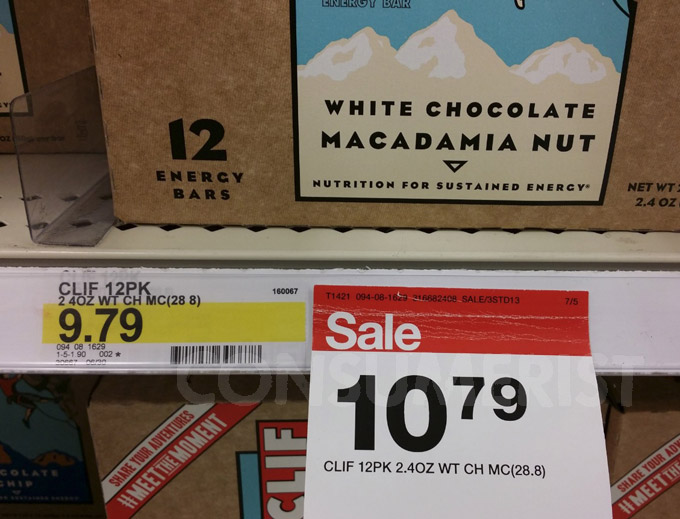More Examples Of Target Math: They Never Said It Was “On Sale”
 There are two different types of Target math, our name for the unusual ways that stores calculate bulk and sale prices. One type is when a “sale” price is higher than a product’s regular price, which is not the normal definition of the word “sale.” The other is when a bulk package of an item costs more per item than just buying it individually. Now we’ve discovered a new form: random numbers pulled in from nowhere.
There are two different types of Target math, our name for the unusual ways that stores calculate bulk and sale prices. One type is when a “sale” price is higher than a product’s regular price, which is not the normal definition of the word “sale.” The other is when a bulk package of an item costs more per item than just buying it individually. Now we’ve discovered a new form: random numbers pulled in from nowhere.
Online shopping cart errors are common enough, but this one has no logic to it. Here’s a screen shot that reader Victor took. “Tell me if you can understand how a $16 product with free shipping becomes a $42 product when the discounts and tax are added in (in the summary box on the right),” he writes. I don’t know. There is no universe where this cart makes sense, especially the part where Victor “saves” 80%.

Pat was shopping at a real-life Target when he thought he’d pick up some Clif bars that were on sale. They had the reasonable sale price of $10.79 per box. “A couple aisles over I saw on an endcap the same boxes of Clif bars that did not have sale tags and were marked at the regular price of…$9.79?” he writes. He checked the shelf where he found the bars originally, and there was an “original” price tag of $9.79.


Now, it’s possible that the “7/5” date on the sale shelf tag is the date when that sale ended, and Patrick was shopping later that same week. July 5 was a Sunday, though, and usually that’s the day that sales and promotions begin.

Lisa sent along this picture of body wash bottles, questioning whether it was “on sale.”

Ah, but Target never said that the bottle was on sale. All the shelf tag says is “As advertised.” They advertised their very reasonable regular price. Apparently.
Want more consumer news? Visit our parent organization, Consumer Reports, for the latest on scams, recalls, and other consumer issues.

